It rains inside 450 Warren, a new 18-unit condominium in Brooklyn’s Boerum Hill neighborhood. It snows too, though not much so far this winter.
Judging from appearances, this climatic permissiveness can come as a little surprising. The five-story development, though puny compared with the vertiginous public-housing complex across Bond Street, affects a low-key defensive posture, not unlike the priggish rowhouses lining the rest of Warren Street. SO – IL’s elemental, Minecraft-like massing is accentuated by the uniform surfacing of concrete blocks, gathered into tight vertical bands that are slightly offset and angled from one another. At a compositional level, the cubic cladding is relieved by deadpan punched windows and balconies, and at a microscopic level, the terrazzo-like green flecks mixed into the aggregate work to soften the building’s image.
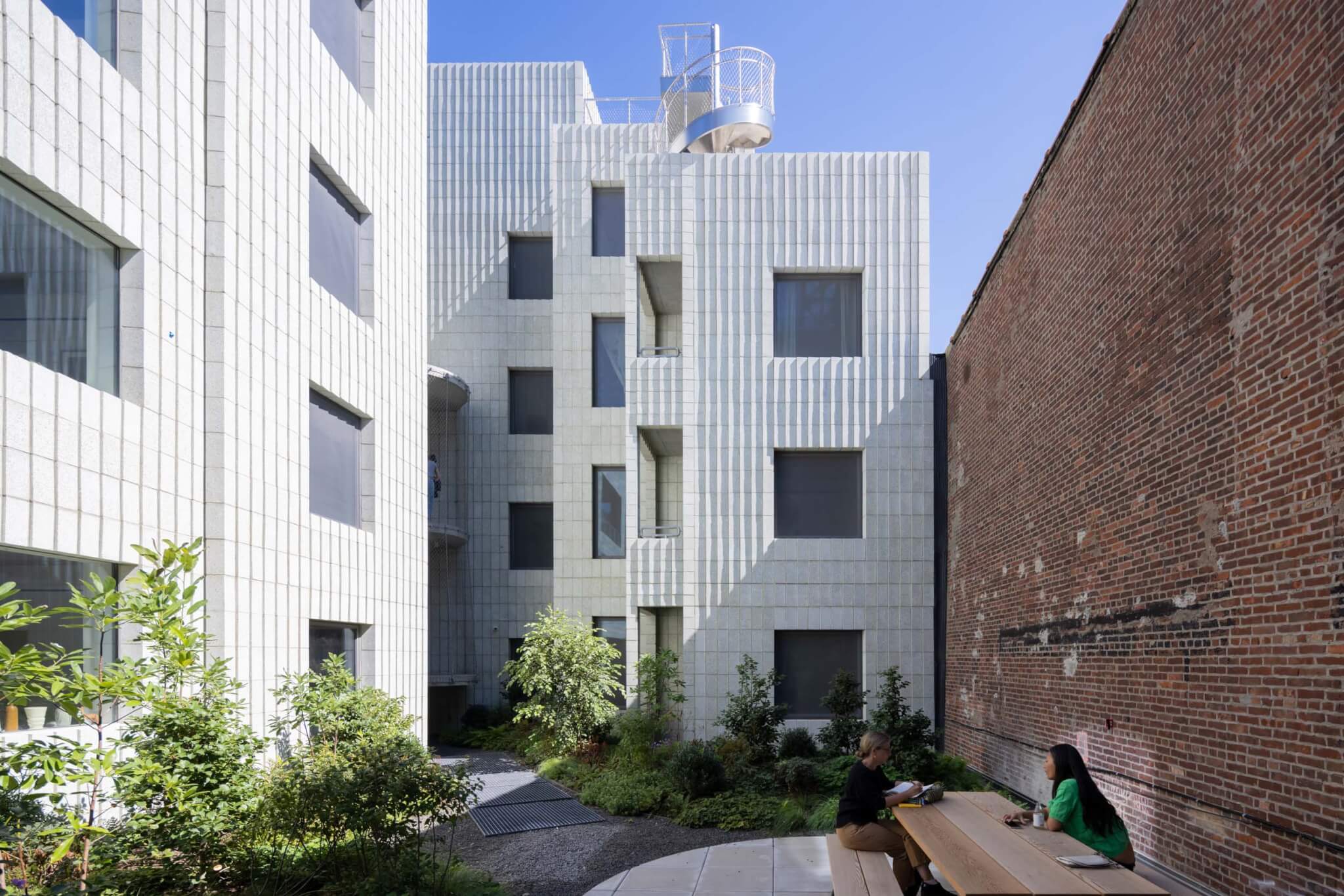
But step through the entry gate (placed off to the side, on Warren), and the architecture suddenly slackens. What at first seemed a dry polemic about archetypal representations of mass is a lucid, well-executed proposition for a new kind of urban housing. Three buildings are arranged around an open-air space, with the far ends of the floor plates connected by slinking gangways. Wire-mesh drapery affixed to the sides of these thin concrete footbridges obviates the need for railings even as it hints at a certain danger.
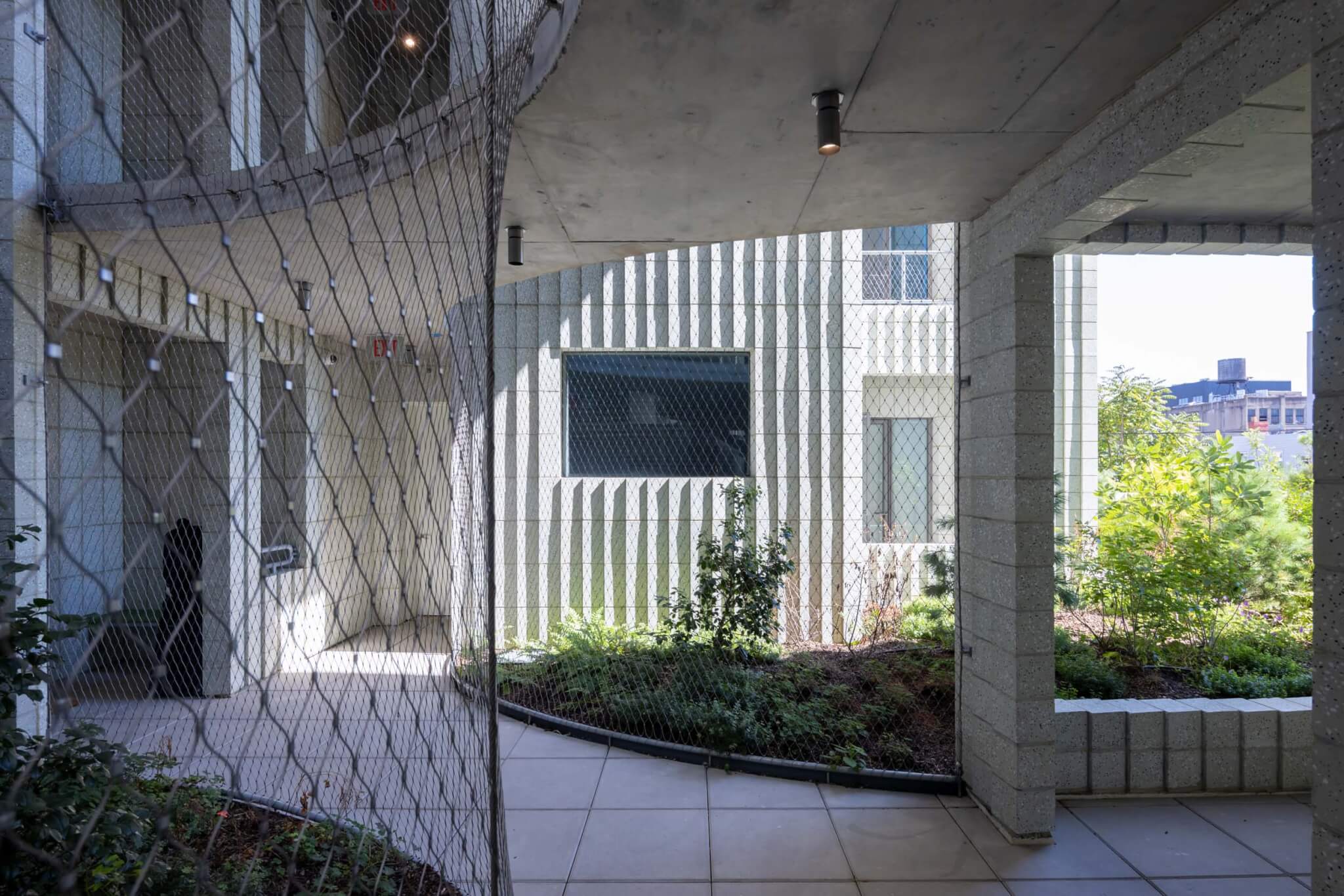
Paradoxically stiff yet blousy, the cable netting modulates the character of the shared court, and thus of the complex as a whole. The effect can be uncanny, particularly on a summer day, when sunlight shimmers across its surface. Slicked with rain, the veil acquires a beguiling sheen. This past holiday season, residents took to pinning festive accoutrements to the mesh, from ghost dolls and spiders for Halloween to Christmas wreaths.
“At first, I worried that people were going to clutter the surface with decorations,” said Sebastian Mendez, with a chuckle. Mendez is an architect and cofounder of Tankhouse, the start-up developer behind the building; he lives on the fourth floor. 450 Warren is the first of four collaborations between Tankhouse and SO – IL to be completed. Conceived as a set, the projects spurn the pro forma thinking that characterizes New York City housing. “Typically, residential developments here will have an efficiency of 80 percent,” Mendez said, referring to building-efficiency ratios that balance leasable or sellable space against the overall floor area. “In this case, it’s close to 50 percent.” Stacked courtyards are an anomalous condition in New York. Exceptions can be found in historically wealthy pockets of Manhattan (London Terrace Gardens in Chelsea being the pinnacle of the type) or in the early garden suburbs of Queens, where block-spanning quadrangles were reduced in height and largely denuded of the ornament lavished on their city counterparts. At a little over 50,000 square feet, 450 Warren is an abbreviated take on the idea, even as it throws in a few twists, enough to earn it a win in the Residential—Multi-unit category in AN’s 2022 Best of Design Awards.
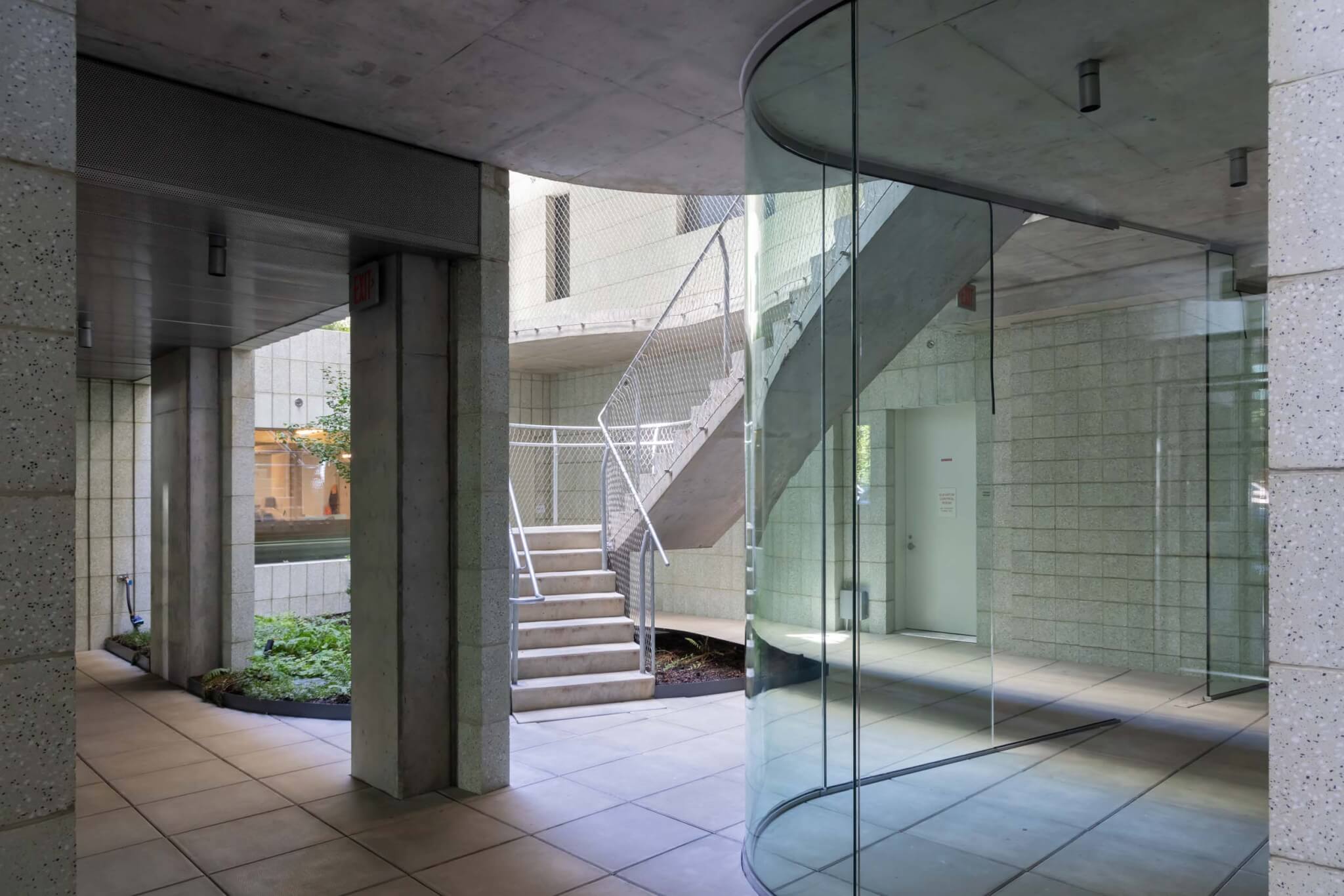
For instance, every apartment faces at least two directions, with front doors positioned around the court. The architects devised foyer-like alcoves—think of mudrooms without doors—where residents shed their sodden shoes and parkas or park their groceries on built-in resin benches as they feel around for house keys. Domestic provisions such as these were possible only because Tankhouse and SO – IL dropped the sunless double-loaded corridor favored by local developers. Instead, they substituted those semi-contiguous walkways, swoopy like a sneaker logo and as suggestively uncomplicated as Matissian découpages. Though exposed to the weather, they are not completely unmediated: The slender slabs are embedded with electrical trace heating to melt snow, and however oblique they may seem, the passages offer the minimum coverage dictated by code.
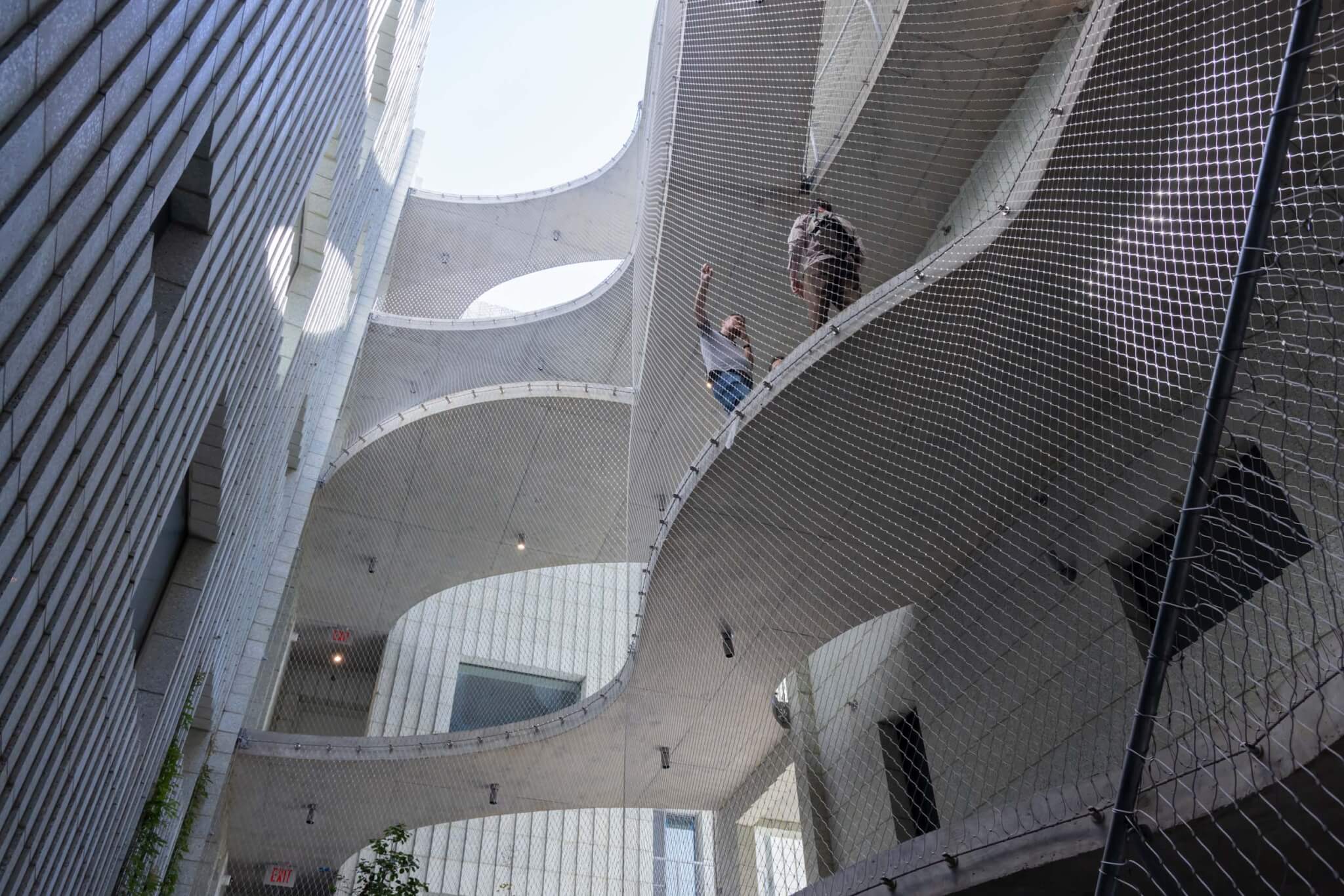
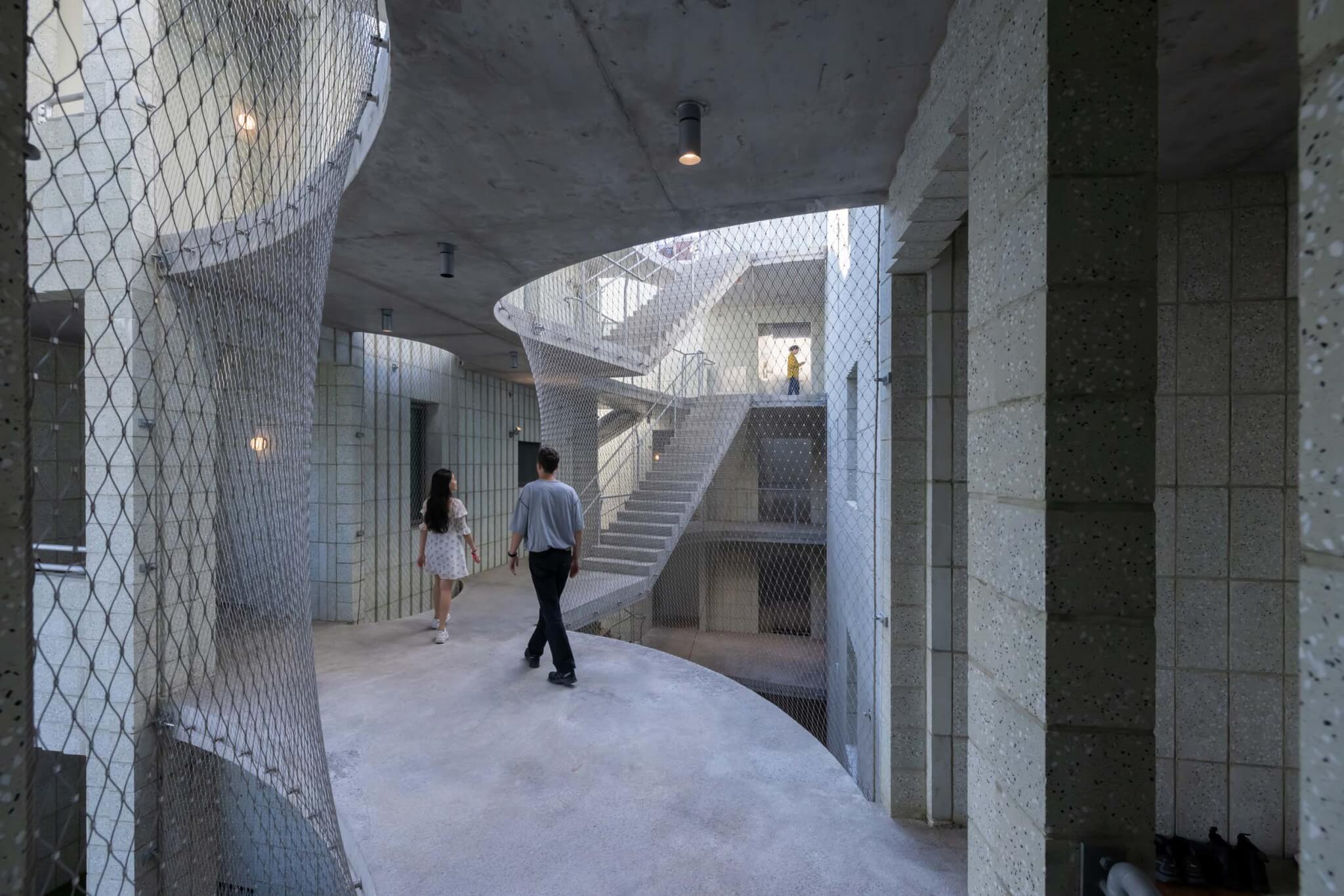
“The building inspector told us, ‘I don’t like it, but I have to sign off on it,’” recalled Florian Idenburg, cofounding partner of SO – IL. “That was his attitude toward the whole design.”
The units have all been sold, save for the top-floor penthouses (asking price: $2 million). SO – IL also designed the interiors of the apartments, where custom pink-marble countertops scream “luxury,” while the gallery-quality baseboard reveals merely murmur it. Idenburg called attention to the provision of natural lighting in all the bathrooms, as well as skylights in hallways and bedrooms; on the building’s website, the broker instead chose to foreground the number of closets in each unit, which is prodigious.
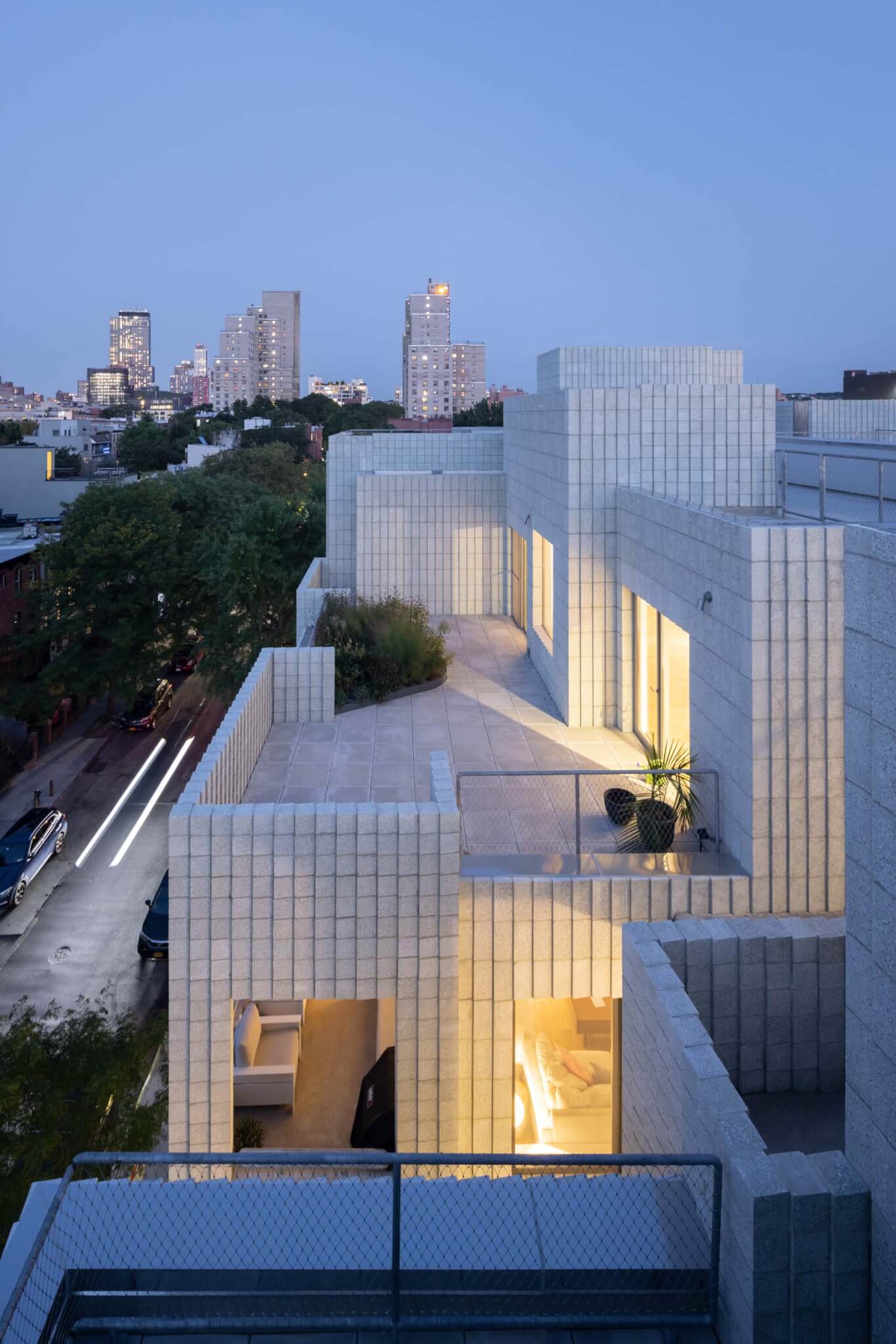
True generosity, however, is to be found outside, in the viscerally breezy central court and in the elevated garden facing Bond Street. The latter, larger than the former, is a more conventional quadrangle slotted into the gap between the buildings and a neighbor’s party wall. Compelled by a zoning mandate, the architects constructed a false facade—really, a two-story surface made with chain-link fence— to enclose the space. Eventually, creepers will provide additional privacy for residents from outside eyes, if not from one another. Owners of the two units adjacent to the area show little inclination toward setting up any barriers; indeed, the manner of their decor seems to invite bidirectional glances. At 450 Warren, the theme seems to be receptivity—to precipitation as well as to each other.



 العربية
العربية